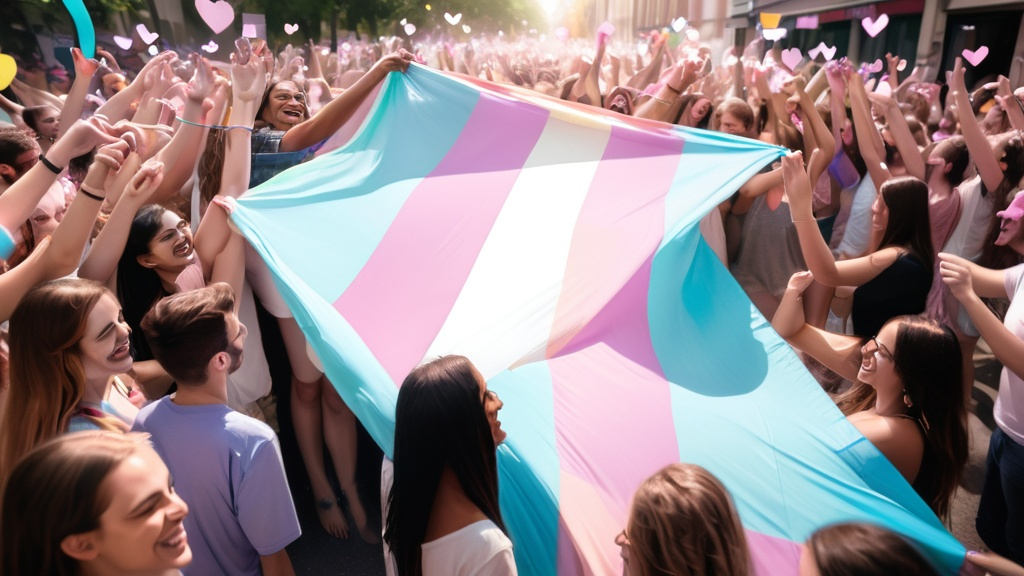Introduction
Transgender Day of Visibility (TDOV), observed annually on 31st March, is a dedicated time to celebrate the resilience and accomplishments of transgender and non-binary individuals.

It serves as an opportunity to raise awareness about the challenges they face and to promote a more inclusive society. Established in 2009 by transgender activist Rachel Crandall, TDOV was created to acknowledge and honour the lives of transgender people, providing a positive counterpart to the Transgender Day of Remembrance, which mourns those lost to anti-transgender violence.
The Origins and Evolution of Transgender Day of Visibility
Before the inception of TDOV, the transgender community primarily had the Transgender Day of Remembrance, observed annually on 20th November, to commemorate those who had lost their lives due to transphobic violence. While this day is crucial for acknowledging the severe challenges faced by the community, Rachel Crandall recognised the need for a day that also celebrated the living members of the transgender community—their achievements, contributions, and existence. This led to the establishment of TDOV on 31st March 2009, aiming to highlight the vibrancy and diversity within the transgender community.
Since its inception, TDOV has grown exponentially, with events and celebrations taking place worldwide. These activities range from educational workshops and panel discussions to art exhibitions and pride marches, all aiming to increase visibility and understanding of transgender issues. The day also serves as a platform for allies to show their support and for policymakers to reflect on the progress made and the work still needed to ensure equality and acceptance for transgender individuals.
The Importance of Visibility for the Transgender Community
Visibility plays a pivotal role in the fight for equality and acceptance. For the transgender community, being visible means more than just being seen; it signifies recognition, validation, and the breaking down of harmful stereotypes and misconceptions. When transgender individuals share their stories and live openly, it fosters empathy and understanding, challenging the prejudices that often lead to discrimination and violence.
Moreover, visibility provides role models for younger or closeted transgender individuals, showing them that they are not alone and that living authentically is possible. It also highlights the diversity within the transgender community, showcasing a wide array of experiences, professions, and backgrounds, thereby dismantling monolithic portrayals. However, it’s essential to acknowledge that increased visibility can also lead to heightened risks, as transphobic sentiments still exist. Therefore, alongside promoting visibility, there must be continuous efforts to ensure the safety and rights of transgender individuals.
In the short video below some transgender people and allies share their feelings around the importance of the day and what it means to them.
Supporting Transgender Colleagues in the Workplace
Creating an inclusive and supportive workplace for transgender colleagues is not only a moral imperative but also enhances overall organisational culture and productivity. Here are several strategies organisations can implement:
- Develop Comprehensive Anti-Discrimination Policies: Ensure that company policies explicitly prohibit discrimination based on gender identity and expression. The UK’s Equality Act 2010 provides legal protection against discrimination for individuals undergoing or proposing to undergo gender reassignment. Organisations should align their policies with this legislation to protect transgender employees.
- Provide Education and Training: Conduct regular training sessions to educate all employees about transgender issues, appropriate language, and inclusive behaviours. This fosters a respectful environment and reduces the likelihood of unintentional discrimination.
- Support Transitioning Employees: Develop clear guidelines to support employees who are transitioning. This includes having a plan for name and pronoun changes, adjusting records, and communicating with the team to ensure a respectful and supportive environment.
- Ensure Inclusive Facilities: Provide access to gender-neutral restrooms and changing facilities. This simple step can significantly reduce the anxiety and discomfort that transgender employees might experience.
- Foster an Inclusive Culture: Encourage the formation of employee resource groups (ERGs) for LGBTQ+ staff, participate in events like TDOV, and celebrate diversity within the organisation. This demonstrates a genuine commitment to inclusion and provides support networks for transgender employees.
Resources for Further Support
For organisations and individuals seeking to enhance their understanding and support of transgender colleagues, the following resources can be invaluable:
- Stonewall: A leading LGBTQ+ charity in the UK, offering comprehensive guides on workplace inclusion and specific advice on supporting transgender employees.
- UK Research and Innovation (UKRI): Provides detailed guidance on supporting transgender employees in the workplace, including best practices and policy recommendations.
Conclusion
Transgender Day of Visibility is more than just a day of recognition; it is a celebration of courage, authenticity, and the ongoing struggle for equality. By understanding its significance and actively supporting transgender individuals, especially in the workplace, we contribute to a society where everyone can live openly and without fear. Embracing diversity and fostering inclusion not only enriches the lives of transgender individuals but also strengthens our communities and organisations as a whole.








